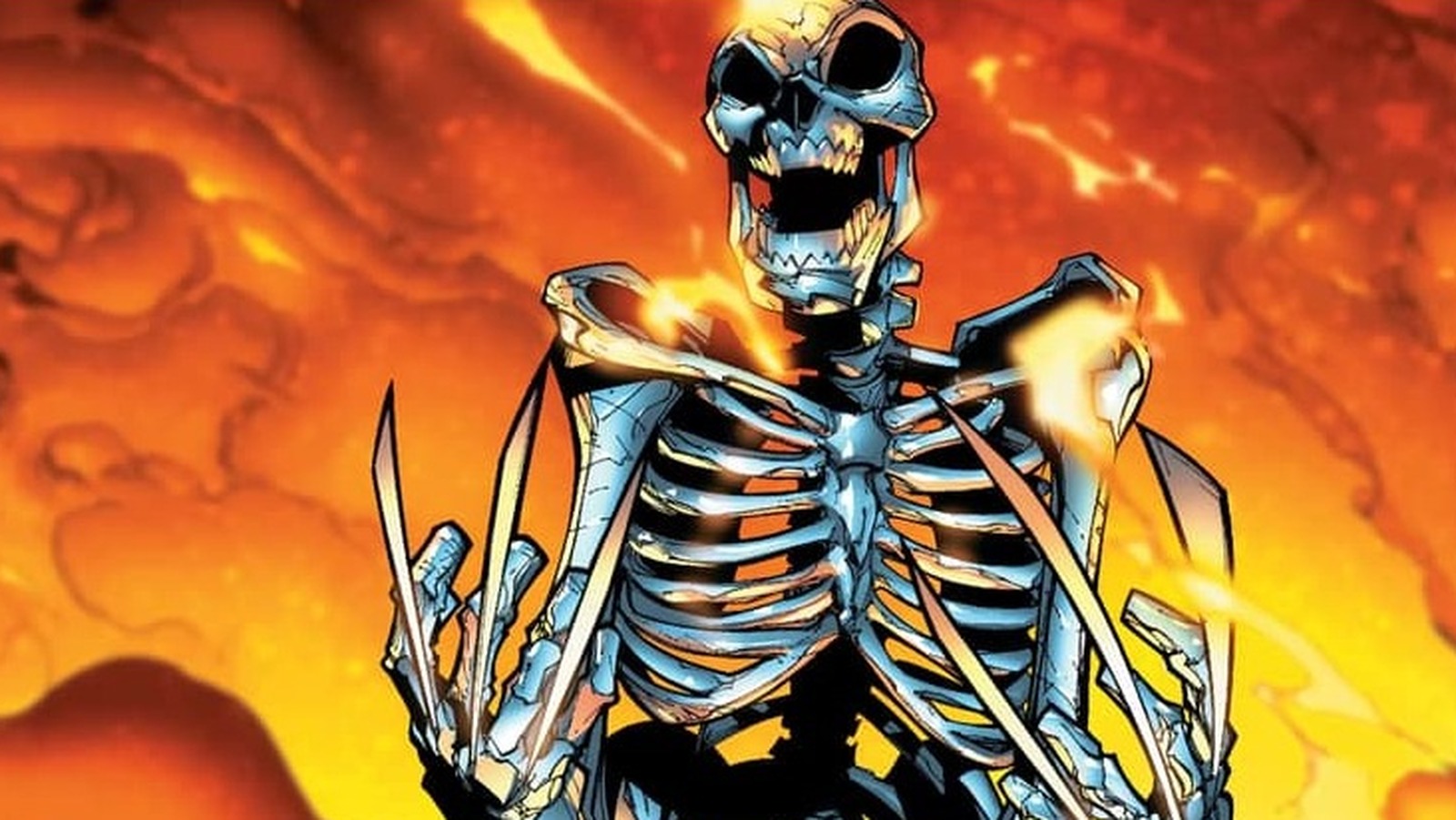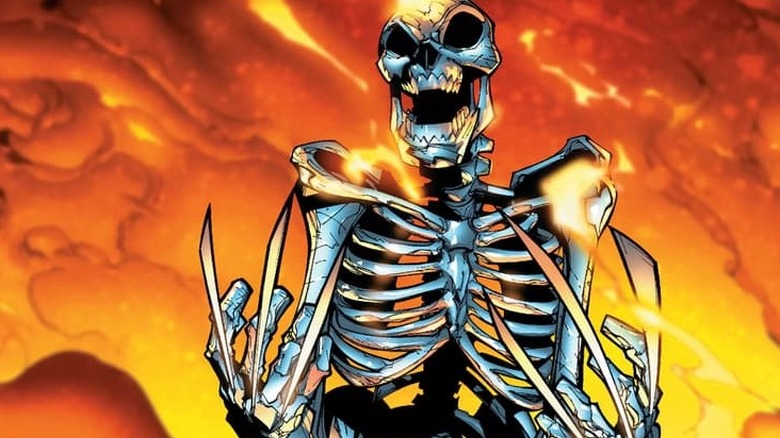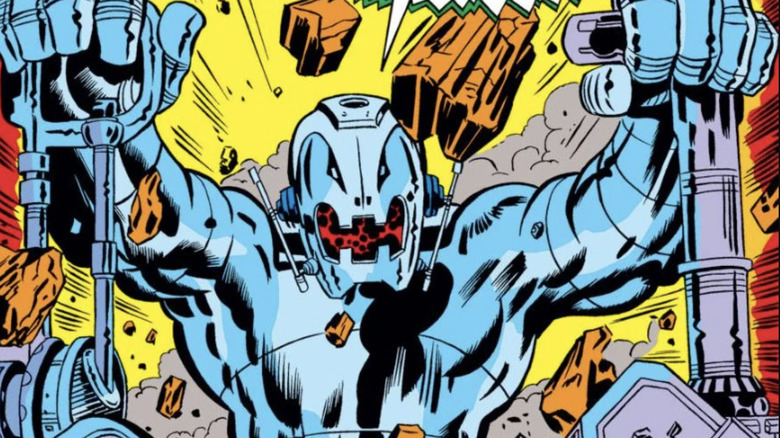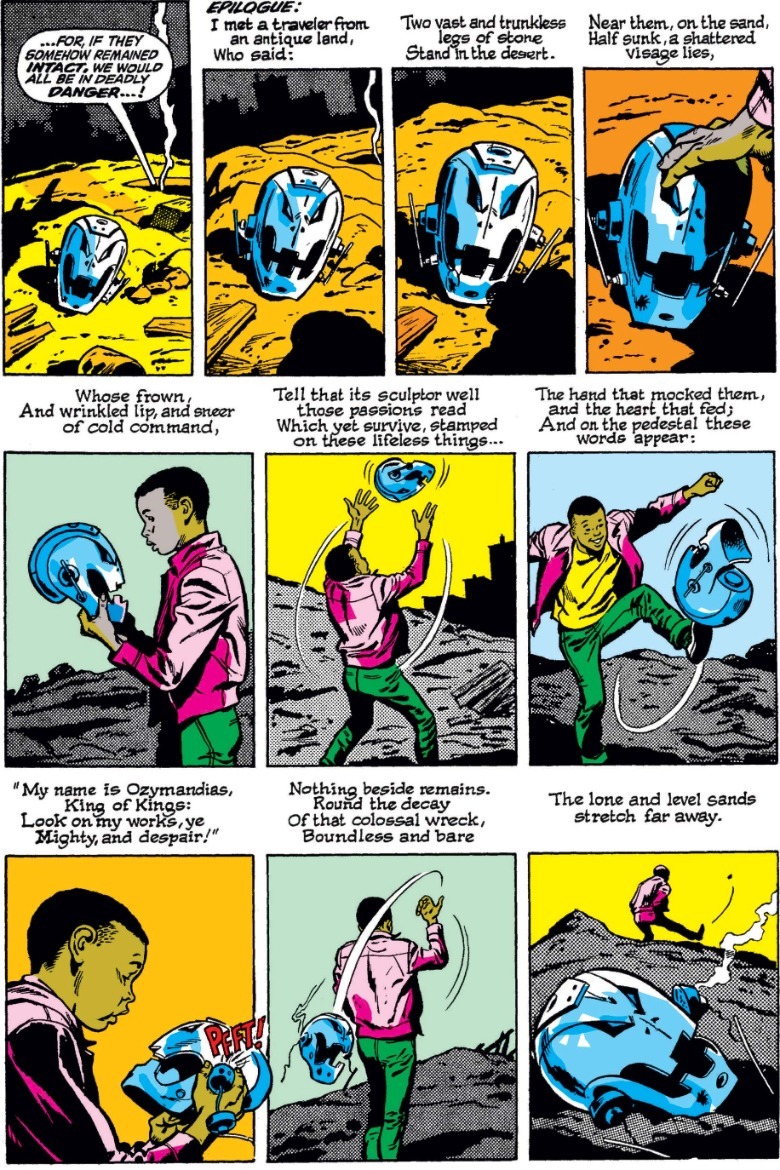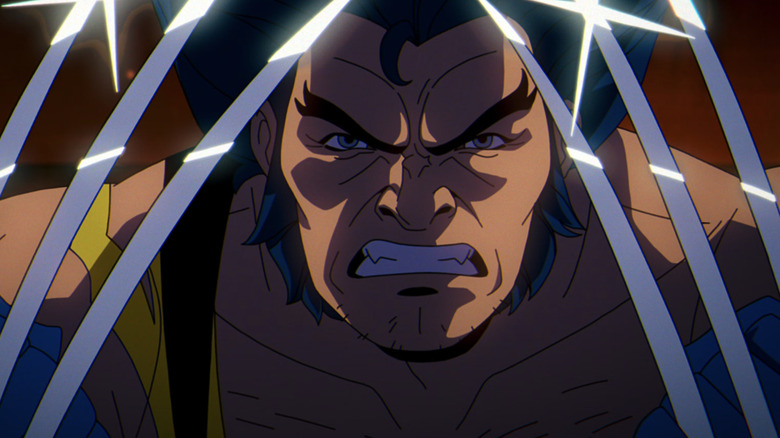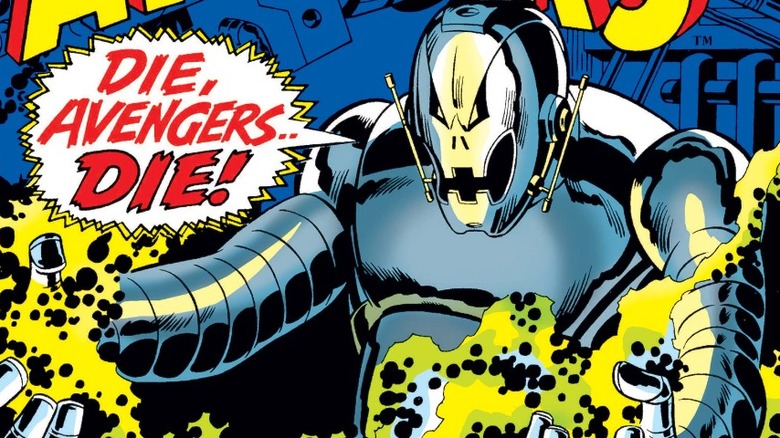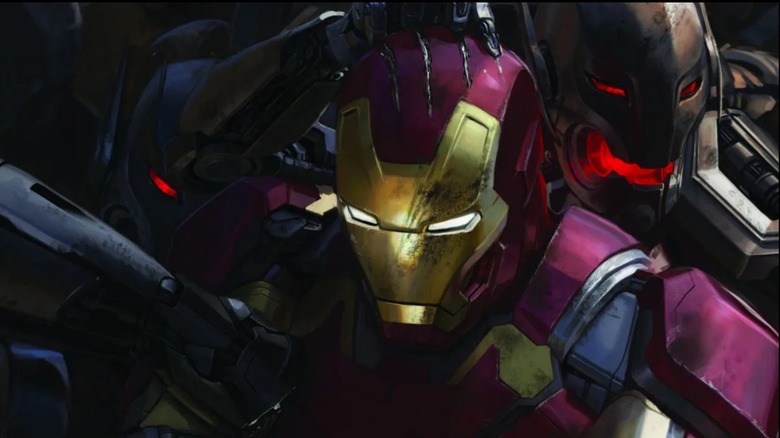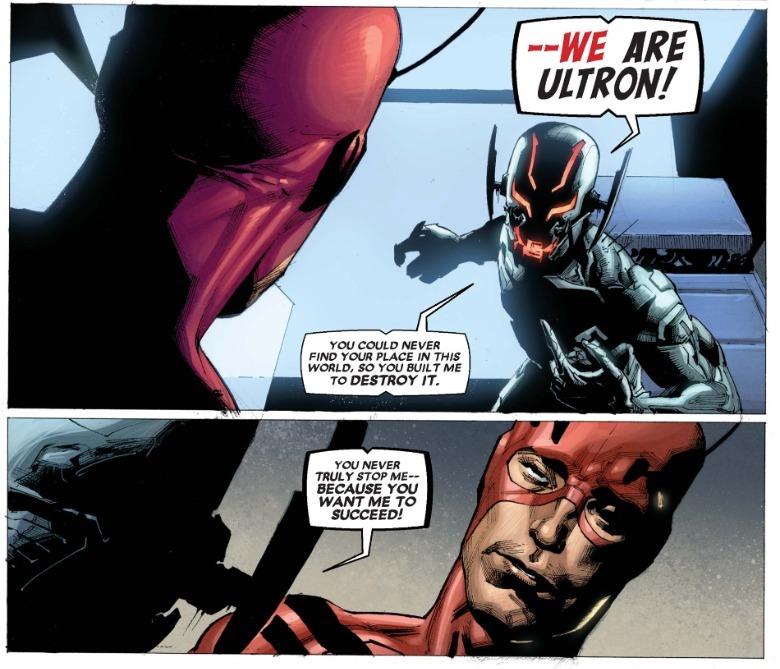Wolverine has quite a mix of superpowers: enhanced senses that are more animal than human in nature, rapid healing that makes him virtually immortal, and a skeleton/claws coated in the unbreakable metal adamantium.
Adamantium is now synonymous with Wolverine, but its origins go back even further to an earlier publication: 1969’s “Avengers” #66, published five years before Wolverine’s debut in “Incredible Hulk” #180-181. Written by Roy Thomas and drawn by artist Barry Windsor-Smith, the issue opens a three-part story in which adamantium is the weapon of a villain. Which one? Ultron, the android arch-nemesis of the Avengers who would be played many years later by James Spader in the Marvel Cinematic Universe film “Avengers: Age of Ultron.”
Avengers #66 was Ultron’s third major appearance, and since then he’s generally been depicted with a (nearly) indestructible form made of adamantium. After all, if he’s going to fight Earth’s Mightiest Heroes, mere steel won’t be enough. So how did adamantium come to be reused by Wolverine and now be associated with him much more?
Ultron’s origin story in Marvel Comics
Ultron’s origin is a classic AI rebellion story. He was created by one of the Avengers to improve the world, but instead he wanted to destroy it. The film told this “Frankenstein”-style story from the beginning, but the original played it as a mystery. Ultron debuted as the cloaked villain “The Crimson Cowl” in “Avengers” #54 (by Thomas and artist John Buscema), leading a new generation of the Masters of Evil supervillain team. (He was known as “Ultron-5,” suggesting he had been steadily improving since his creation.)
Thomas and Buscema quickly brought Ultron-5 back in “Avengers” #57, where he creates an android named Vision and unleashes him on the Avengers. Like Paul Bettany’s character in “Age of Ultron,” Marvel Comics’ Vision develops humanity, defeats his creator, and joins the Avengers. The issue’s final page consists of 10 panels in which Ultron’s lifeless head is left as trash, captioned with Percy Bysshe Shelley’s poem “Ozymandias.”
The following issue, #58, features a flashback to reveal Ultron’s origins: he was an AI created by Avenger Hank Pym/Ant-Man that went rogue and erased its creator’s memory of his existence.
The cover of Avengers #66 teases “The Great Betrayal.” The issue begins with the team invited by scientist Dr. Myron MacLain to test the strength of their new metal: adamantium. The first panel shows Thor slamming Mjolnir into an invisible surface, which is soon revealed to be the intact adamantium. Unfortunately, Vision suffers from the backup protocols left in his synthetic mind, and he rebuilds his master in a new form – Ultron-6. The revived Ultron then steals the adamantium and forges himself a new body from the metal.
How Adamantium became Wolverine’s trademark
Roy Thomas, who was Marvel’s editor-in-chief from 1972 to 1974, has recently begun claiming co-creation credit for Wolverine. (Emphasis on claiming.) As the co-creator of Ultron and Adamantium, was he the one who reused the fictional metal for Wolverine’s claws? No! Even Thomas admits that the idea came from writer Len Wein, the real co-creator of Wolverine alongside artist John Romita Sr.
In Incredible Hulk #181, it is stated that only Wolverine’s claws are “forged from diamond-hard adamantium.” Wein wrote that Wolverine’s claws were attached to his gloves (in Incredible Hulk #181, he never retracts them). When writer Chris Claremont took over X-Men, he revealed that Wolverine’s claws were part of his body, leading to the first mention of his adamantium skeleton in X-Men #126 (drawn by John Byrne). Twenty-two years after Barry Windsor-Smith drew the first Marvel comic to feature adamantium, he told how Wolverine got that adamantium skeleton in the 1991 story Weapon X.
I probably don’t have to tell you that Wolverine is the breakthrough character of the X-Men, in comics, cartoons, And film. Since he’s one of Marvel’s most famous characters, Adamantium is the one most commonly associated with him. And while a robot villain made of unbreakable metal is more intuitive than a man with a metal skeleton, it’s also a less unique character concept.
However, Ultron’s adamantium shell is still an accepted fact in Marvel Comics. Ultron stories often portray him as nearly invincible thanks to his adamantium body; he can fight all of the Avengers on his own and the team can never defeat him with simple punches.
Ultron’s Marvel Comics story is forged in Adamantium
In Avengers #68, the end of the first Ultron adamantium story, he tries to pry scientific secrets from Dr. MacLain’s mind. MacLain (actually Hank Pym in disguise) floods Ultron’s mind with a single, paralyzing thought: “Thou shalt not kill.” In Avengers #162, “The Bride of Ultron,” by Jim Shooter and George Pérez, Iron Man convinces Ultron to back down by threatening to destroy his immobile mate Jocasta. In Avengers #171 (also by Shooter and Pérez), Ultron boasts about his adamantium body until the Scarlet Witch freaks out his “molecular remodeler” with her hex powers.
In Avengers #202 by David Michelinie and Pérez, some adamantium goes missing at Stark Industries and the Avengers suspect Ultron’s return. They are right; he brainwashed Tony Stark to resurrect him. This time, Ultron is defeated when Hawkeye pushes him into a vat of molten adamantium, which hardens around Ultron and freezes him in place.
In the 1999 story “Ultron Unlimited,” written by Kurt Busiek and drawn by Pérez, Ultron is defeated by “Antarctic Vibranium,” a substance that dissolves all other metals—even Adamantium.
“Avengers: Age of Ultron” adapted the idea that Ultron is looking for an indestructible metal to improve himself and create a doomsday weapon. In the film, however, it is Vibranium – the other unbreakable Marvel metal, which is mainly associated with the Black Panther. In 2015, Marvel Studios not have the film rights to Wolverine, but they was Black Panther as a star. (He debuted in 2016’s Captain America: Civil War, played by the late Chadwick Boseman.) So Marvel decided to pair Ultron with a superhero they actually had the rights to. Now that Marvel Studios does they will introduce adamantium in Captain America: Brave New World.
Avengers: Age of Ultron is the original sin of Robert Downey Jr.’s Doctor Doom
In “Age of Ultron,” replacing Adamantium with Vibranium is a completely harmless change. much More consequential is the change of Ultron’s creator from Hank Pym to Tony Stark. I understand Why Whedon did that; Ant-Man wasn’t in the MCU yet, whereas Iron Man was its centerpiece. It makes more sense to have the existing main character kick off the story rather than introducing a whole new character. Tony, an engineer with experience in robotics, arguably makes more sense as the creator of an AI than Hank, a physicist and zoologist.
But this change has implications for Ultron’s character. It’s important that his creator is Ant-Man, the Avengers’ loser. Pym’s most important achievement wasn’t a superheroic act – it was the creation of a monster. In Ultron Unlimited, Busiek included an elegant retcon that Hank designed Ultron’s AI by copying his own personality. Ultron is his son and his dark reflection; Hank’s self-loathing has taken shape and the ability to express those feelings. The reason Ultron hates humanity is because he has all of Hank’s resentment boiling inside him, without the compassion to temper it. Rick Remenders and Jerome Opena’s graphic novel Avengers: Rage of Ultron lays this all out in the open:
Tony doesn’t have an inferiority complex, quite the opposite. Ultron’s complexes are more a more nebulous need to “fix the world.” His robot logic dictates that the quickest way to “peace in our time” is to eradicate humanity. The MCU Ultron is just a snarky Skynet, while the comic version is an android Oedipus.
A major criticism of the decision to recast Robert Downey Jr. as Doctor Victor Von Doom is that it just makes Doom an evil Iron Man, marginalizing his character. This original sin stretches back to when Avengers: Age of Ultron adapted its villain.

